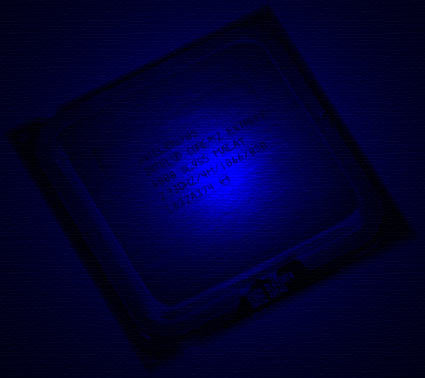Does Cache Size Really Boost Performance?
What Is The Impact Of Cache Size?

The first processor that came with L2 cache (though it was not integrated) was the Pentium Pro in 1995. It had either 256 kB or 512 kB second-level cache on the die and thus had a significant performance advantage over the regular Pentium processors whose cache memory was located on the motherboard. With the introduction of the Pentium II on the Slot 1 module, dedicated cache memory was planted onto the processor. However, it wasn't before the second-generation Pentium III for socket 370 when cache memory could be found on the actual processor die. This hasn't changed to date for performance reasons, but there still are some processors with little cache and those with a lot. So is it worth spending money for more cache? In the past, extra cache really did not make much difference in performance.
Although there have always been measurable differences between processors with little cache and those with a lot of cache memory, it was smarter to choose devices with smaller cache to save money. But no processor model prior to Core 2 Duo was available in three different cache flavors.
The Pentium 4 carried 256 kB L2 cache in its first generation (Willamette, 180 nm) and 512 kB in the most successful, second-generation (Northwood, 130 nm). At this time, low-cost Celerons with less cache memory were produced using the same processing cores. The Celerons represented the first generation of high-end and low-cost products with the same technical origin, differing only in useable cache size and FSB/core clock speed. Feature differences were added later to further distinguish market segments.
With the introduction of the 90-nm Prescott core, 1 MB caches were introduced, and they represented the backbone of Intel's desktop processor portfolio until the 2 MB cache, 65-nm Cedar Mill core took over. Intel even used two of these to create the second-generation Pentium D 900 series. However, the faster clock speeds and cache sizes did not mean a whole lot, even then. Now, things have changed; the Core 2 Duo's (Conroe, 65 nm) better performance and lower power consumption have a lot to do with cache size.
AMD has been prudent about when and how to boost cache size. Presumably, this is because silicon real estate is extremely important when 65-nm output cannot satisfy the market demand and there still is a noticeable dependence on the economically less beneficial 90-nm process. Intel, on the other hand, has the advantage of producing all mainstream processors in 65-nm, and it seeks further increases in L2 cache capacity. The next Core 2 generation based on the 45-nm Penryn core will even carry up to 6 MB of L2 cache. Is this just marketing bluff or does the swelling of L2 cache capacities indeed lead to better performance? Let's find out.
Join our discussion on this article!
Get Tom's Hardware's best news and in-depth reviews, straight to your inbox.
Current page: What Is The Impact Of Cache Size?
Next Page Large Caches: Performance Or A Business Decision?
Patrick Schmid was the editor-in-chief for Tom's Hardware from 2005 to 2006. He wrote numerous articles on a wide range of hardware topics, including storage, CPUs, and system builds.
-
I like, it was helpfull read. no one could addord core 2 duo's in 2007 now we can, I didnt see yourcomment in 2007 HansVonOhain.Reply
-
blueme Nice review!Reply
~3 years ago I had the E8300 2.83 Ghz with 6MB cache for ~200$
Now I have the E3200 with 1MB cache, overclocked at 2.88 for 20$
The performance difference is negligible at best, especially considering the price. And although the E8400 doesn't cost that much, it's still around ~80$ used. -
isidroco I disagree with the conclusion, CACHE size does NOT matter, most cases are with less than 10% (with a max of 15% in winrar) difference between 1mb and 4mb. 10% is too little to be noticed in real world applications, there is no difference in waiting 9 or 10 seconds...Reply